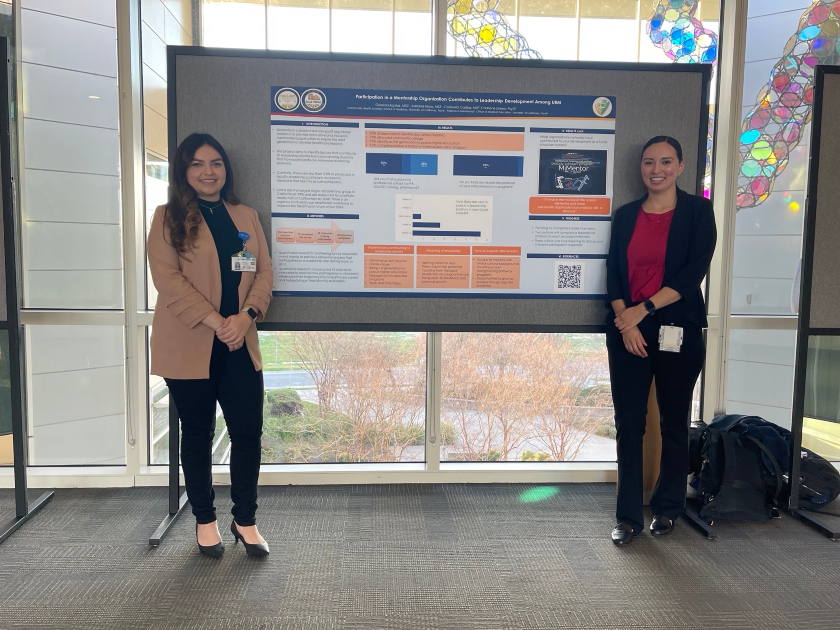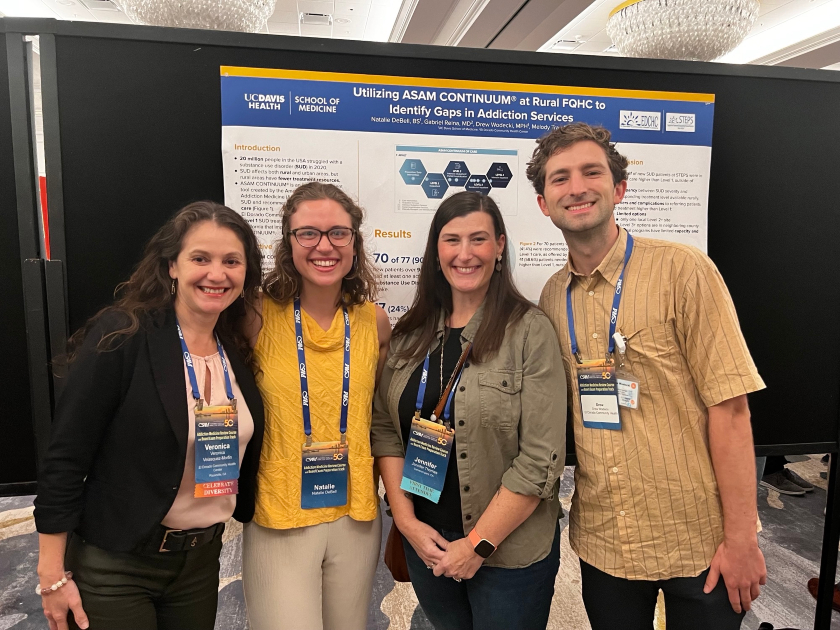CHS Longitudinal Scholarly Projects
Project Overview
Longitudinal Scholarly Activity:
Community Health Scholars in all pathways are required to engage in a longitudinal scholarly project that spans the entirety of their medical school experience. Projects and/or activity addresses a specific need, issue, or knowledge gaps of health care professionals within a targeted community.
Participation in a 4-year longitudinal scholarly project that addresses a specific need or issue within their communities is a required component for all CHS students. Students will regularly present their work-in-progress and receive peer and faculty feedback throughout medical school, with a final capstone project presentation at the end of their fourth year prior to graduation.
Objectives:
The CHS Curriculum aims to provide students with the foundation to provide outstanding clinical care for underserved communities, with a focus on 5 pillars of excellence: community engagement, leadership, professional development, mentorship, and scholarship. The objectives for this longitudinal project are:
- Improve the health of a community through a longitudinal scholarly project that incorporates principles of asset-based community engagement.
- Demonstrate leadership skills such as effective advocacy, change management, team facilitation, and dissemination of knowledge.
- Exemplify professionalism in relationships with community members and peers with capacity for continuous self-improvement and adaptability.
Pillars Addressed: Community Engagement, Leadership, Professional Development, Scholarship
Project Overview:
Students will select a scholarly project to engage in during medical school. Examples of acceptable scholarly projects include:
- A community engagement project with a local organization
- A needs assessment for a community with formulation or implementation of recommendations
- A quality improvement project in partnership with a community health center
- Curriculum development for topics relevant to underserved communities
- A research project examining health outcomes in underserved communities
CHS students may work on this project alone or together with other students. Working together is highly encouraged, but not required.
Students will be given dedicated time to work on their community projects throughout their CHS curriculum. However, some asynchronous and independent work outside of this time is expected to occur as well.
As a community of scholars, a key component of the CHS scholarly project is presenting work-in-progress to peers for regular structured feedback and vice versa. Peers will serve as consultants to help students navigate their current project challenges. Work-in-progress meetings will be held regularly throughout MS2 – MS4 years. A final capstone presentation of the project outcomes will occur at the end of MS4 year.
Sample Project Timeline
Year at UC Davis |
Deliverable |
|
MS1: Fall to Spring |
Project Development Time: Students will learn about the community and meet with mentors to discuss possible project options. |
|
MS1: Spring |
Project Proposal Presentation: Students will share Project/Need Statement, Goals, and Plan |
| MS2-MS4 |
Work-in-progress presentation (about 2x/year): Students will present interval updates and help each other troubleshoot issues that arise during the course of their projects. |
| MS4 |
MS4 Senior Capstone presentation: Students will share what they have achieved and learned through working on their scholarly projects. |
Examples of current student projects:
- Improving transitions of care for Pediatrics patients with Sickle Cell Disease into adult based medical care.
- Utilizing ASAM CONTINUUM® at Rural FQHC to Identify Gaps in Addiction Services.
- Participation in Mentorship Organization (MiMentor) Contributes to Leadership Development among Underrepresented in Medicine students.
- Medical Spanish: Implementation and Utilization in the Pre-Clerkship Phase.
- Flu Crew: Every Dose Matters. Quality Improvement Project to increase flu vaccination rates in student run clinics.
- Down to Earth: A community program that aims to increase exposure and accessibility to outdoor activities and promote wellness for those living in the Central Valley and Yolo County
- Assessing Exposure of a Career as a Doctor among High School Students in Disadvantaged California Communities.




